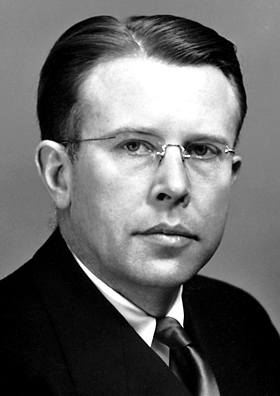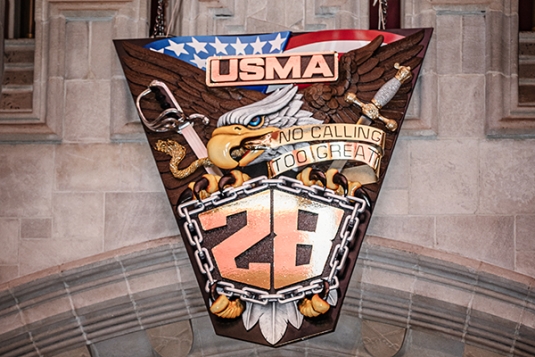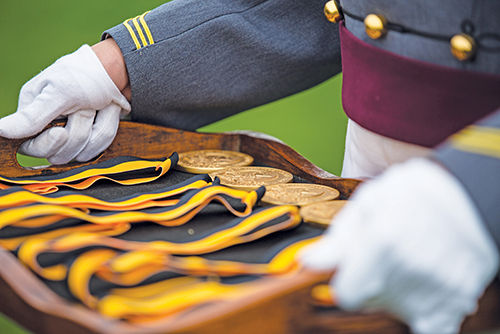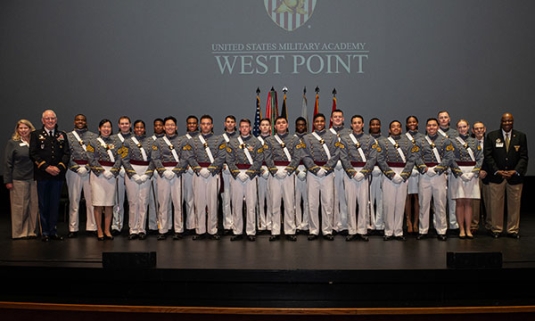Dr. Ernest Orlando Lawrence, distinguished nuclear physicist. Professor of Physics at the Univ of California and Director of its Radiation Laboratory, has been selected as the first of the Sylvanus Thayer Award, to be presented to him in a ceremony at Washington Hall, West Point, on Friday, March 21st. The Award, named for West Point’s fifth superintendent, (1817-1833), was created recently by the Association of Graduates at the Academy, for presentation annually to the American citizen who best exemplifies the principles expressed in West Point’s motto—”Duty, Honor, Country”.
Born in Canton, South Dakota, in 1901, the son of a teacher and school administrator, Dr. Lawrence received his A. B. from the Univ of South Dakota, his M. A. from the Univ of Minnesota, and his Ph.D. from Yale. He became an associate professor of physics at the Univ of California at the age of 27, and a professor at 29. While an associate professor, he conceived the idea of the cyclotron, a device which since has come to be a most powerful research tool, making it possible to smash atoms and transmute elements without the use of methods both dangerous and expensive. In 1939 Dr. Lawrence was awarded the Nobel Prize in Physics.
In 1941, he was one of six top-ranking scientists appointed to evaluate the importance of the atomic energy program and to recommend the level of expenditure at which the problem should be investigated. After the attack on Pearl Harbor, he was one of three program chiefs in the Office of Scientific Research and Development. His research into electromagnetic separation of chemically identical isotopes proved its practicality and led to the building of the Oak Ridge plant as a large-scale application of his principles.
In February 1946, Dr. Lawrence received the Medal of Merit for his brilliance in making possible the successful release of atomic energy. After World War II, when scientific research into further uses of atomic energy was primarily devoted to nonmilitary application, he was the leader of a minority group of scientists who continued to urge investigation of military application. He is a member of the United States delegation to the London Disarmament Conference (Stassen Commission).
Dr. Lawrence has received many honors: the D. Sc. from Princeton (1937), Yale (1937), Stevens Institute (1937), Harvard (1941), Rutgers (1941), Univ of Chicago (1941), McGill Univ (1946), and the universities of British Columbia (1947), Southern California (1949), and San Francisco (1949), the LL.D. from the Univ of Michigan (1938), the Univ of Pennsylvania (1942), and the Univ of Glasgow (1951). He holds, among other awards, the Elliott Crosson Medal of the Franklin Institute (1937), Comstock prize of the National Academy of Sciences (1937), Hughes Medal of the British Royal Society (1937), Holley Medal of the American Society of Mechanical Engineers (1942), and a medal of the Assoc of Graduate Engineers of the Univ of Liege, Belgium, (1947). A Fellow of the American Physical Society, the American Association for the Advancement of Science, and the American Academy of Arts and Sciences, he also is a member of the National Academy of Sciences, and the American Philosophical Society, other organizations with which he has been associated include the U.S.S.R. Academy of Sciences (honorary member, 1943), the Royal Society of Edinburgh (honorary Fellow, 1945), and the Royal Irish Academy (1948). He was made a member of the Board of Trustees of the Carnegie Institution of Washington in 1944. Dr. Lawrence’s fraternities are Phi Beta Kappa, Sigma Xi, and Gamma Alpha.
Ernest 0. Lawrence has devoted his life and his talents to scientific development. For his tremendous assistance to the national effort, and for his continuation in the struggle against the enemies of our nation, Dr. Lawrence is considered to be an outstanding exponent of “Duty, Honor, Country”, and is selected therefore as the FIRST RECIPIENT OF THE SYLVANUS THAYER MEDAL.




